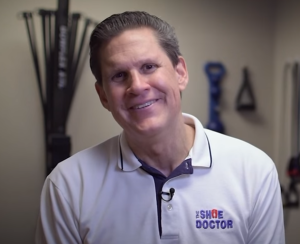If you are experiencing pain in your feet, you may have metatarsalgia. Metatarsalgia is a condition that affects the Metatarsal bones in your feet. These bones are responsible for supporting your weight and allowing you to walk and run. If they become injured or inflamed, it can be very painful to walk or stand. In this article, we will discuss what metatarsalgia is, and why you need to worry about it. We will also provide tips on how to treat this condition and relieve the pain.
What is Metatarsalgia?
Metatarsalgia is a condition that results in pain in the ball of your foot. This can be caused by several factors, including high-impact activities, ill-fitting shoes, or underlying medical conditions. While metatarsalgia is not usually a serious condition, it can be very painful and cause difficulty walking or standing for long periods.
What Puts You at Risk for Metatarsalgia?
Several things can put you at risk for Metatarsalgia. One is if you have a high arch or flat feet, which puts more pressure on the metatarsals. Another is if you’re overweight or obese because there’s more pressure on the balls of your feet when you walk. You’re also at risk if you wear shoes that don’t fit well or that don’t support your feet properly. High heels are a common culprit, as are ballet flats and other shoes with little to no arch support. If you have bunions or hammertoes, those can also contribute to Metatarsalgia by putting pressure on the wrong areas of your foot.
- If you have a high arch or flat feet, you’re at risk for metatarsalgia.
- Overweight and obese individuals are also at risk for the condition.
- Wearing shoes that don’t fit well can put pressure on your feet and lead to metatarsalgia.
- Bunions and hammertoes can also contribute to the development of metatarsalgia.
Who is at higher risk for metatarsalgia?
Several things can increase your risk for metatarsalgia. If you are a runner or if you play soccer, tennis, or football, you may be at higher risk for metatarsalgia. This is because these activities put extra stress on your feet. Metatarsalgia is also more common in women than men. This may be because high heels can put extra pressure on the balls of your feet. People who have diabetes or arthritis are also at higher risk for metatarsalgia.
Is metatarsalgia serious?
The short answer is that, while metatarsalgia can be extremely painful, it is not typically a serious condition. However, if you are experiencing chronic pain in your feet or have developed calluses or corns as a result of the condition, you should see a doctor and discuss treatment options. If left untreated, metatarsalgia can lead to more serious problems such as arthritis or deformities in the bones of your feet.
- Metatarsalgia is not typically a serious condition
- If left untreated, metatarsalgia can lead to more serious problems
- Seek treatment if you are experiencing chronic pain in your feet
- Get relief from metatarsalgia with orthotics and other treatments
Treatment for Metatarsalgia
The good news is that Metatarsalgia is treatable. Depending on the severity of your condition, you may be able to find relief with simple at-home treatments such as ice and rest. If your Metatarsalgia is more severe, you may need to see a doctor for more aggressive treatment options such as cortisone injections or surgery.
1. Non-surgical Treatment
Doctors may advise you to wear more cushioned shoes or use specific padding under the delicate part of your foot to offer the bones additional cushioning. Orthotic devices (specific shoe supports for your arches) may also be used to modify the pressure distribution on your bones by adjusting the position of your foot in shoes.
2. Surgical Treatment for Metatarsalgia
If you have Metatarsalgia, there are several surgical treatments that can help. Metatarsal surgery is usually only recommended if you have severe pain that doesn’t go away with other treatments.
The most common type of Metatarsal surgery is called a “Metatarsal osteotomy”. This involves cutting the bone in your foot and realigning it to take pressure off the area that is causing pain. This procedure can be done using either open or minimally-invasive techniques.
Another option is Metatarsal head resection surgery. This involves removing the damaged portion of the metatarsal head (the round knob at the end of the bone). This procedure is also typically done using either open or minimally-invasive techniques.
Metatarsal surgery is usually done as an outpatient procedure, which means you can go home the same day. Recovery time varies depending on the type of surgery you have, but it is typically around six weeks.
No matter what stage your Metatarsalgia is at, it’s important to take action now to prevent the condition from worsening. If you wait too long, Don’t put off getting started on treating your Metatarsalgia! Early treatment can prevent long-term damage to the bones and joints in your feet, so don’t delay. Take action right away to treat your Metatarsalgia.
Remember, The 3 Arches of Your Feet Still Need Support!
Maybe you have already felt the first symptoms of balance disorders or you want to prevent them from appearing in the first place. Consider getting a foot orthotic device or simply take care of your feet. Start by washing them thoroughly with a gentle soap whenever you take a shower. Being a very complex support system, your feet are your first line of defense against balance-related issues, since their arches provide you with the stability you need in your daily life. It’s time to put your foot down and push back against balance issues. With both feet on the ground, dedicate yourself to keeping them comfortable and healthy. Give us a call and we will scan your feet to make you custom orthotic inserts.
The Shoe Doctor has specialized in providing custom orthotics for 20 years. The right orthotic insoles can greatly reduce foot, knee, and hip pain while increasing performance and comfort. Russell at The Shoe Doctor will help educate and assist you in finding the perfect solution for your particular situation. We will create a 3D map of your feet and make custom orthotics for your hiking boots, everyday shoes, and everything else in between. These orthotics, along with our expert advice, will get you using orthotics like a pro, and have you performing at the peak of your abilities in no time! If you are in the San Francisco Bay Area, give The Shoe Doctor a call to get the best custom orthotics in the area! We are here to assist you, schedule your free consultation here!


